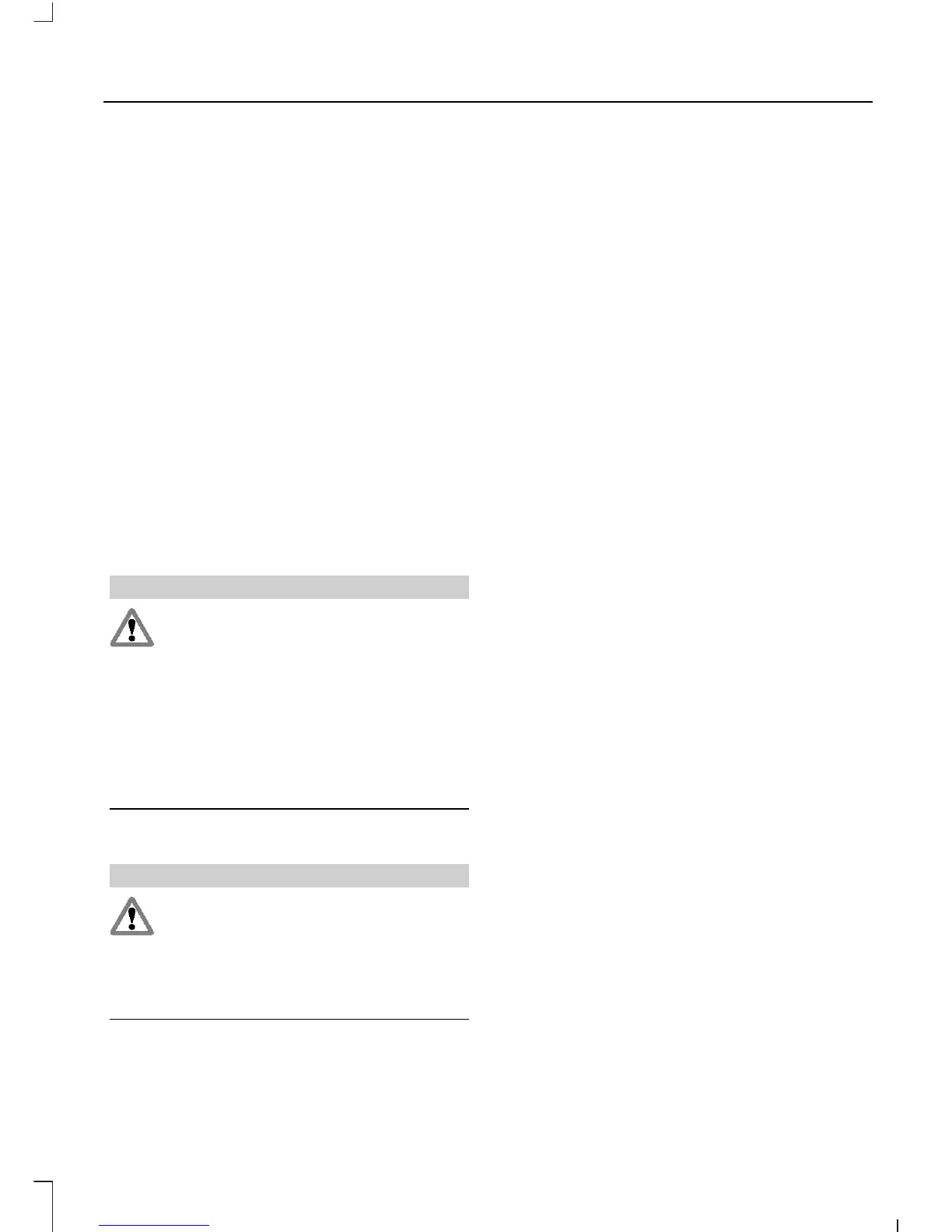13. Remove the power plug G from the
cigar lighter socket or auxiliary power
point.
14. Quickly unscrew the hose C from the
tire valve and replace the protective
cap A. Fasten the valve cap again.
Note: Some residual sealant fluid may drip
or spray out of hose C while you are
disconnecting it. This is normal.
15. Leave the sealant bottle K in the
bottle holder E.
16. Make sure the kit, the bottle lid and
the orange cap are stored safely, but
still easily accessible in your vehicle.
The kit will be required again when
you check the tire pressure.
17. Immediately drive approximately
two miles (three kilometers) so that
the sealant can seal the damaged
area.
WARNING
If you experience heavy vibrations,
unsteady steering behavior or noises
while driving, reduce your speed
gradually and stop your vehicle as soon as
it is safe to do so. Recheck the tire and its
pressure. If the tire pressure is less than
1.3 bar (19 psi) or if there are any cracks,
bumps or similar damage visible, do not
continue driving with this tire. This could
cause loss of vehicle control.
Checking the Tire Pressure
WARNING
Before driving, make sure the tire is
adjusted to the recommended
inflation pressure. See Technical
Specifications (page 217). Monitor the
tire pressure until the sealed tire is
replaced.
1. Stop your vehicle after driving
approximately two miles (three
kilometers). Check, and where
necessary, adjust the pressure of the
damaged tire.
2. Attach the kit and read the tire pressure
from the pressure gauge F.
3. If the pressure of the sealant-filled tire
is 1.3 bar (19 psi) or more, adjust it to
the specified pressure. See Technical
Specifications (page 217).
4. Follow the inflation procedure once
again to top up the tire.
5. Check the tire pressure again from the
pressure gauge F. If the tire pressure is
too high, deflate the tire to the
specified pressure using the pressure
relief valve B.
6. Once you have inflated the tire to its
correct tire pressure, move the
compressor switch H to position 0,
remove the power plug G from the
socket, unscrew the hose C, fasten the
valve cap and replace the protective
cap A.
7. Leave the sealant bottle K in the bottle
holder E and store the kit away safely
in its original location.
8. Drive to the nearest tire specialist to
get the damaged tire replaced. Before
the tire is removed from the rim, inform
your tire dealer that the tire contains
sealant. You must renew the sealant
bottle K and hose C as soon as possible
once used.
Note: Remember that this kit only provides
temporary mobility. Regulations concerning
tire repair after usage of the kit may differ
from country to country. You should consult
a tire specialist for advice.
Empty sealant bottles can be disposed of
together with normal household waste.
Return remains of sealant to an authorized
dealer or dispose of it in compliance with
local waste disposal regulations.
205
Kuga (CBS) Vehicles Built From: 10-03-2014, Vehicles Built Up To: 31-12-2014, CG3585en enGBR, Edition date: 02/2014, None
Wheels and Tires

